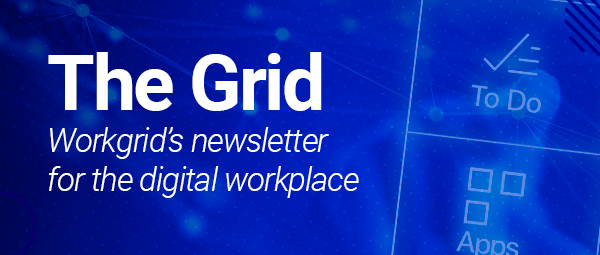Understanding Retrieval Augmented Generation (RAG)
Imagine being in a vast library filled with countless books, documents, and articles. It can feel like searching for a needle in a haystack to find the exact information you need. Hours pass by as you tirelessly search, but with no fruitful results. Now, picture having a super-librarian by your side who not only finds the precise resources you need but also provides insightful summaries and explanations. This super-librarian serves as a fitting analogy for Retrieval Augmented Generation (RAG), a powerful AI technology that combines retrieval and generative capabilities to revolutionize how we access and consume enterprise information.
RAG is a hybrid approach that merges retrieval-based methods with generative models. In the simplest terms, fetching relevant data, enriching user prompts with context, and then generating accurate responses to the user.
Retrieval-based methods are adept at obtaining relevant information from a large corpus. While generative models are skilled at creating coherent and contextually appropriate responses. By combining these methods, RAG leverages both strengths. For an AI Assistant, this results in the user having the power to find the most pertinent information and generate insightful and contextually appropriate responses based on gleaned information.
Let's break it down. In a typical RAG system, the process involves three main stages:
Retrieve:
The system first uses a retrieval mechanism to search a vast database of documents, articles, or other data sources to find information relevant to the user's query. This resembles a highly sophisticated search engine that can pinpoint exactly what a vast data pool needs. Recent advancements in vector search have further enhanced this capability. Vector search works by converting text data into vectors (numerical representations) that capture the semantic meaning of words. For instance, in a corporate database, the query "latest financial report" will retrieve documents that not only include those exact terms but also related concepts like "quarterly earnings" or "annual financial statements." (However, it should be noted depending on the specific implementation and requirements, RAG can also be employed via other retrieval methods, such as keyword-based or metadata-based searches.)
Augmented:
With RAG, the LLM doesn't need to memorize every detail of the underlying data in advance. Using our super-librarian analogy, the system fetches the most relevant books and snippets when a query is made. This clever approach automatically enriches the LLM's prompt with pertinent information, ensuring that its responses are accurate, insightful, and up-to-date.
Generation:
Once the relevant information is retrieved, a generative model, often a variant of a transformer-based model (like OpenAI ChatGPT), synthesizes this information into a coherent, human-like response that feels more conversational. This ensures the final output is accurate, contextually rich, and easy to understand.
The Power of RAG in Enterprise Search and Discovery
In the context of enterprise search and discovery, RAG offers unparalleled advantages:
Enhanced Employee Insights and Discovery
Traditional search systems often struggle to understand the nuanced context of user queries, especially if they are asked in a conversational format, leading to less accurate results. By combining retrieval and generation, RAG ensures that the information provided is relevant and precisely tailored to the user's needs. Vector search techniques are critical in reducing incorrect outputs by matching queries with the most semantically relevant information.
![[asset] What is RAG Stock Blog Image (1920 × 1080 px)](https://images.ctfassets.net/z7p73u8c0thn/7E3A1wZEOvGX7lxB96g8sZ/b53902f219caf2e110543704e5f516d6/What_is_RAG_Stock_Blog_Image__1920___1080_px_.png?w=1200&h=675&q=60&fm=png&bg=transparent)
Why RAG is a Game-Changer for Enterprise Discovery?
Accuracy: Traditional search systems often miss the context of user queries given their reliance on keyword matching. RAG combines retrieval and generative models to ensure information is both relevant and tailored to user needs, significantly reducing incorrect outputs.
Speed and Efficiency: Vector search techniques enable quicker information retrieval by efficiently indexing and searching through vast datasets, allowing users to access necessary information without delay.
Deep Contextual Understanding: Generative models maintain context, which is crucial for complex enterprise queries. This ensures responses are factual and woven into a meaningful narrative.
Enhanced User Experience: Accurate and contextually appropriate responses significantly enhance user satisfaction and productivity.
Scalability: RAG systems can efficiently handle large amounts of data, making them ideal for enterprises with extensive information repositories.
Versatility Across Domains: RAG's ability to retrieve and generate information makes it applicable across various enterprise areas, from customer support to research and development.
How Organizations Can Benefit from RAG
Let’s imagine a scenario in a business setting. A Customer Success Manager (CSM) assists a customer with a software issue. The CSM queries the AI Assistant about a complex software bug. Using RAG, the AI Assistant first retrieves relevant information such as previous incident reports, troubleshooting guides, product sheets, and technical documentation. It then generates a comprehensive response that addresses the current issue and provides preventive measures, source citations, and additional resources for further reading. This ensures the CSM is equipped with quick, accurate information to meet customer needs effectively.
Workgrid and the Future of Enterprise Insights and Discovery
At Workgrid, we are leveraging the power of RAG to transform how enterprises interact with their information ecosystems. Our AI Assistant leverages a three-punch combo of advanced AI, NLP, and RAG to deliver users a seamless and intuitive discovery experience of enterprise applications, resources, and information. By better understanding the context of user queries and retrieving the most relevant information, Workgrid ensures that employees can access the knowledge they need precisely when needed.
What Are the Benefits of RAG Processing That Empowers the Workgrid Assistants?
Faster Decision Making: With accurate and relevant information at their fingertips, employees can make informed decisions more quickly.
Increased Efficiency: Employees can focus on more strategic tasks, enhancing overall productivity by reducing the time spent searching for information.
Better Insights: RAG enables deeper insights by connecting disparate pieces of information and presenting them coherently.
Higher Quality Information: The combination of the vector search, semantic search, proprietary knowledge chains, and RAG reduces the likelihood of incorrect outputs, ensuring that the retrieved information is relevant, accurate, contextualized and reliable.
![[asset] AI-Assistant-Chat-and-Notification](https://images.ctfassets.net/z7p73u8c0thn/XQ1W5F28jZ9lwx1XYMOP2/a6c91205613e4a931fabcc53710f7fbc/AI-Assistant-Chat-and-Notification.png?w=1200&h=1200&q=60&fm=png&bg=transparent)
In conclusion, envision RAG as the ultimate super-librarian for the digital era. It retrieves the most pertinent information from a vast amount of data, then synthesizes and presents it in a user-friendly and highly actionable manner. This potent blend of retrieval and generation, bolstered by vector search, is poised to revolutionize how businesses handle and leverage information.
At Workgrid, our dedication lies in harnessing and advancing AI to its maximum capabilities, resulting in unparalleled experiences for gaining insights and making discoveries. By empowering employees with the necessary information, we enable faster decision-making, heightened efficiency, and deeper insights.

![[asset] RAG-Workgrid-Assistant-Overview](https://images.ctfassets.net/z7p73u8c0thn/4tT59JJS9SqWN1Hvpd0ddT/877b14545b44602772527388e7314f42/RAG-Workgrid-Assistant-Overview.png?w=1200&h=663&q=60&fm=png&bg=transparent)



